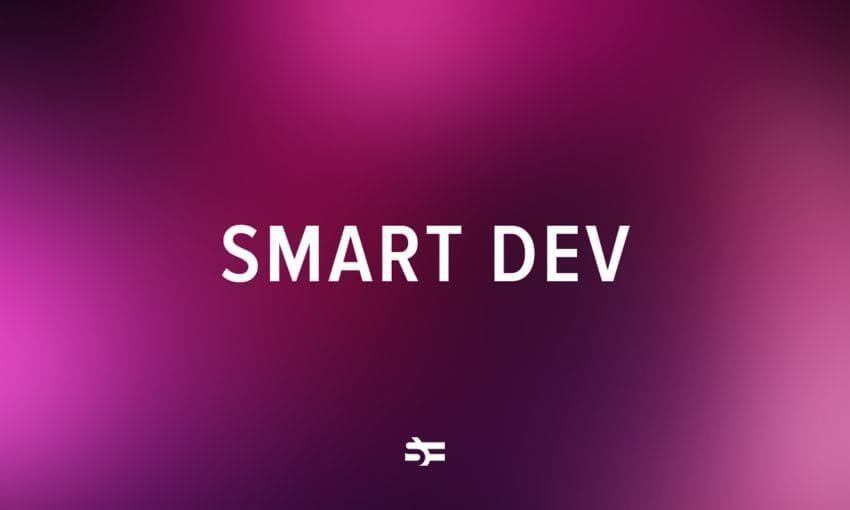Machine learning professionals are always on the lookout for diverse datasets to develop innovative and powerful models. In this blog post, we have compiled 25 free datasets, categorized by industry, to help you get started.
Healthcare

In this section, you will find 5 free datasets for the healthcare and medicine industries.
1. Breast Cancer Wisconsin Dataset
This dataset contains features of cell nuclei derived from breast cancer biopsy images. Each instance is described by 30 attributes such as radius, texture, and perimeter. The data is used to classify tumors as either benign or malignant. It’s widely utilized for building diagnostic models to assist in early detection and treatment planning for breast cancer.
2. MIMIC-III clinical database
MIMIC-III is a comprehensive database containing de-identified health data from approximately 60,000 intensive care unit (ICU) patients. It includes demographics, vital signs, laboratory tests, medications, and notes from healthcare providers. Researchers use this dataset to develop predictive models for patient outcomes, understand disease progression, and improve ICU management. The richness of the data supports diverse research initiatives in clinical medicine and healthcare.
3. COVID-19 Open Research Dataset (CORD-19)
CORD-19 is a growing resource of scholarly articles related to Covid-19 and other coronaviruses. It includes titles, abstracts, full-text articles, and relevant metadata. Researchers leverage this dataset for text mining, natural language processing, and machine learning tasks to extract insights and accelerate the development of treatments and vaccines. It plays a crucial role in understanding the virus’s characteristics, transmission patterns, and impacts.
4. Diabetes dataset
This dataset includes 20 diagnostic measurements of diabetes such as glucose levels, blood pressure, skin thickness, insulin levels, and BMI. It is often used for binary classification to predict whether a patient has diabetes based on these medical attributes. Researchers and data scientists employ this dataset to develop predictive models and improve screening processes for diabetes management and prevention.
5. Human Activity Recognition Using Smartphones dataset
The dataset captures various physical activities (like walking, sitting, standing) through accelerometer and gyroscope data recorded from smartphones. Each instance is a multivariate time series with sensor data labeled according to the activity performed. It is commonly used for building models that can recognize and classify human activities, aiding in applications such as health monitoring, fitness tracking, and personalized healthcare solutions.
Finance

In the finance section, you will find data to build models for market fluctuations and fraud detection predictions.
1. Yahoo Finance stock market data
This dataset includes historical stock prices, trading volumes, and other financial information for a wide range of publicly traded companies. The data can be used to analyze market trends, perform technical analysis, and develop predictive models for stock price movements. Researchers and financial analysts leverage this dataset to test investment strategies, conduct financial forecasting, and study the behavior of financial markets.
2. Lending Club loan data
This dataset contains detailed information about loans issued through the Lending Club platform, including loan amount, borrower demographics, credit scores, payment history, and loan status. It is primarily used for credit risk modeling and default prediction. Financial analysts and data scientists use this data to build models that can assess the risk of new loan applications and improve lending decisions.
3. Cryptocurrency historical prices
The dataset comprises historical price data for various cryptocurrencies, including daily prices, market capitalization, and trading volumes. It is useful for analyzing the volatile cryptocurrency market, identifying trading opportunities, and developing automated trading strategies. Researchers use this data to study price dynamics, market correlations, and the impact of external events on cryptocurrency values.
4. Credit card fraud detection dataset
This dataset includes anonymized credit card transactions, with each transaction labeled as fraudulent or legitimate. It contains various features such as transaction amount, time, and derived attributes from the original features. Data scientists use this dataset to develop and evaluate models for fraud detection, aiming to minimize false positives and accurately identify fraudulent activities.
5. Financial news articles dataset
This dataset consists of financial news articles and metadata, often including sentiment labels or scores. It is used for sentiment analysis and its impact on stock prices and market movements. Researchers analyze the text data to build models that can predict market reactions based on news sentiment, enhance trading algorithms, and study the relationship between media coverage and financial markets.
Marketing

Marketing datasets are useful for customer segmentation, sentiment analysis, and price strategy analysis.
1. Online retail dataset
This dataset contains transactional data from a UK-based online retail store, including details about invoices, stock codes, product descriptions, quantities, and customer information. It is used for analyzing purchasing patterns, customer segmentation, and sales forecasting. Data scientists and marketers use this data to develop strategies for inventory management, customer retention, and targeted marketing campaigns.
2. Google Merchandise Store analytics dataset
The dataset includes Google Analytics data from the Google Merchandise Store, featuring information on user behavior, traffic sources, session durations, and e-commerce metrics. It is useful for understanding user engagement, optimizing website performance, and improving conversion rates. Marketers use this data to analyze the effectiveness of marketing channels, design better user experiences, and enhance digital marketing strategies.
3. Customer segmentation dataset
This dataset contains customer demographics, purchasing behavior, and transaction history, typically from a retail or e-commerce platform. It is used for clustering customers into distinct segments based on their behavior and preferences. Marketers and data analysts use this data to tailor marketing campaigns, personalize customer experiences, and improve customer relationship management.
4. Black Friday dataset
The Black Friday dataset includes sales transaction data from Black Friday, featuring customer demographics, product details, and purchase amounts. It is used to analyze consumer behavior during peak shopping periods, identify popular products, and understand spending patterns. Marketers utilize this data to plan promotional strategies, optimize pricing, and enhance inventory management during high-demand events.
5. Email marketing Dataset
This dataset comprises data from email marketing campaigns, including metrics such as open rates, click-through and conversion rates. It is used to analyze the effectiveness of email campaigns, segment audiences, and improve engagement strategies. Marketers employ this data to test different email formats, optimize content, and increase the overall effectiveness of their email marketing efforts.
E-commerce

In this section, you will find 5 datasets for retail and e-commerce industries.
1. Amazon product reviews
This dataset includes customer reviews for Amazon products, featuring review text, star ratings, and metadata such as product IDs and review timestamps. It is used for sentiment analysis, product recommendation systems, and understanding customer feedback. Data scientists and marketers analyze this data to improve product descriptions, enhance customer satisfaction, and develop targeted marketing strategies.
2. eBay online auction dataset
The dataset consists of data from online auctions conducted on eBay, including item descriptions, starting bids, final prices, bid history, and auction duration. It is utilized to analyze bidding behavior, predict auction outcomes, and optimize auction strategies. Researchers and analysts use this data to study market dynamics, enhance auction designs, and understand the factors influencing bidding patterns.
3. UCI e-commerce dataset
This dataset includes customer behavior data from a Brazilian e-commerce platform, featuring user sessions, page views, product categories, and purchase details. It is used to analyze browsing patterns, predict purchase intent, and optimize website design. E-commerce analysts use this data to improve user experience, increase conversion rates, and design personalized marketing campaigns.
4. Instacart market basket analysis
The Instacart dataset contains data on orders from Instacart, an online grocery delivery service, including order details, product information, and user behavior. It is used for market basket analysis, recommendation systems, and understanding customer purchasing habits. Data scientists leverage this data to develop models for product recommendations, optimize inventory, and design targeted promotions.
5. Flipkart product listings dataset
This dataset includes product listings from Flipkart, an Indian e-commerce website, featuring product names, categories, prices, and descriptions. It is used to analyze product trends, optimize search algorithms, and improve product recommendations. E-commerce professionals use this data to enhance product visibility, understand market demand, and develop strategies for competitive pricing and promotions.
Natural language processing (NLP)

In this section, you will find datasets that can be used for NLP tasks across various industries.
1. IMDB movie reviews dataset
This dataset contains 50,000 movie reviews from IMDB, labeled as positive or negative. It is widely used for sentiment analysis tasks to classify reviews based on their sentiment. Researchers and data scientists utilize this dataset to train models that can understand and interpret the sentiment expressed in textual data, helpful in applications like opinion mining and recommendation systems.
2. 20 Newsgroups dataset
The 20 Newsgroups dataset comprises approximately 20,000 newsgroup documents across 20 different newsgroups. It is used for text classification, topic modeling, and natural language processing tasks. This dataset helps in developing models that can classify text into categories, perform topic extraction, and analyze trends in textual content from different domains.
3. Quora question pairs dataset
This dataset includes pairs of questions from Quora, labeled to indicate if they are duplicate (i.e., if they have the same intent). It is used to build models for detecting duplicate questions, improving question-answering systems, and enhancing community question-answer platforms. Data scientists employ this dataset to develop techniques for semantic similarity, text matching, and clustering of questions.
4. Wikipedia text dataset
The Wikipedia text dataset contains a large corpus of textual data extracted from Wikipedia articles. It is used for various NLP tasks such as language modeling, text generation, and information retrieval. Researchers leverage this dataset to train language models, develop summarization algorithms, and enhance knowledge extraction from vast textual sources.
5. Twitter sentiment analysis dataset
This dataset consists of tweets labeled with sentiment scores (positive, negative, or neutral). It is used for sentiment analysis and opinion mining on social media data. Data scientists use this dataset to build models that can analyze public sentiment, track trends in social media conversations, and understand user opinions on various topics and events.
Image recognition

In this section, you will find five helpful datasets for developing and evaluating models for image recognition tasks.
1. CIFAR-10 dataset
The CIFAR-10 dataset consists of 60,000 32x32 color images categorized into 10 classes, such as airplanes, cars, birds, cats, and deer. It is widely used for benchmarking image classification algorithms. Researchers and data scientists utilize this dataset to develop and evaluate models for image recognition tasks, fostering advancements in computer vision techniques and deep learning architectures.
2. MNIST handwritten digits dataset
The MNIST dataset contains 70,000 grayscale images of handwritten digits (0-9), each of size 28x28 pixels. It is primarily used for training and testing image processing systems in digit classification. This dataset is a standard benchmark for evaluating machine learning algorithms and is instrumental in developing techniques for optical character recognition (OCR).
3. Fashion MNIST
Fashion MNIST is a dataset of 70,000 grayscale images of fashion products, each 28x28 pixels, categorized into 10 classes such as t-shirts, trousers, and shoes. It serves as a drop-in replacement for the original MNIST dataset but with more complex and varied visual features. Researchers use this dataset to test image classification models and improve systems for fashion product recognition and categorization.
4. ImageNet dataset
The ImageNet dataset contains over 14 million images organized according to the WordNet hierarchy, with each image labeled by human annotators. It includes more than 20,000 categories and is used for large-scale image classification, object detection, and image segmentation tasks. This dataset is a crucial resource for training deep learning models and has been foundational in advancing the field of computer vision.
5. COCO Dataset
The COCO (Common Objects in Context) dataset comprises over 330,000 images, with more than 200,000 labeled instances across 80 object categories. It includes annotations for object detection, segmentation, and image captioning tasks. Researchers use this dataset to develop and benchmark models for object recognition, instance segmentation, and contextual understanding in images, contributing significantly to advancements in visual perception technologies.
Conclusion
By exploring and utilizing these datasets, machine learning professionals can broaden their expertise and work on a wide range of problems across various industries. Whether you are working on healthcare diagnostics, financial forecasting, marketing strategies, e-commerce analytics, natural language processing, or image recognition, these datasets provide a robust foundation for developing cutting-edge models and solutions.
Read more:



.jpg)
.jpg)



